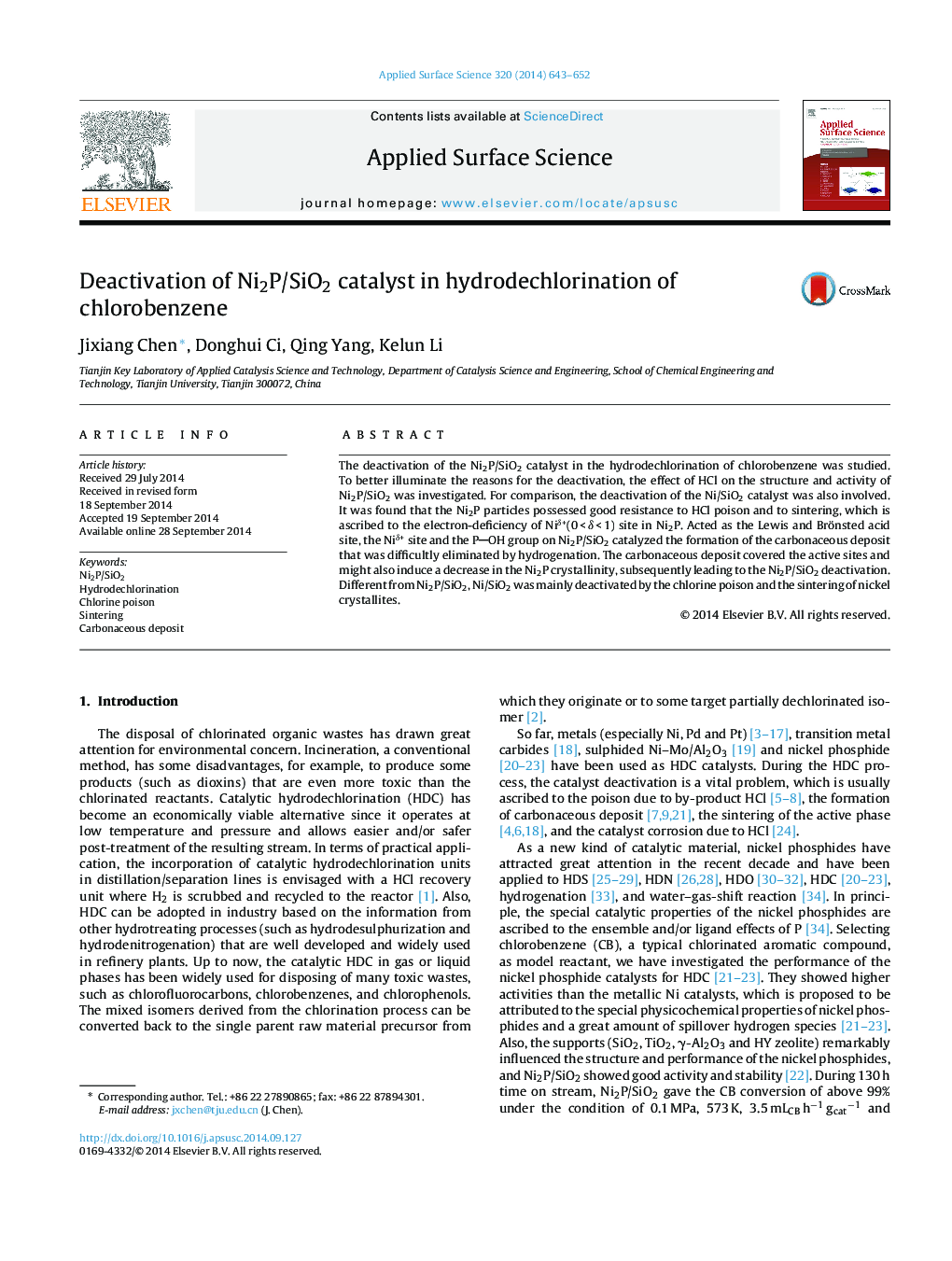| Article ID | Journal | Published Year | Pages | File Type |
|---|---|---|---|---|
| 5349677 | Applied Surface Science | 2014 | 10 Pages |
Abstract
The deactivation of the Ni2P/SiO2 catalyst in the hydrodechlorination of chlorobenzene was studied. To better illuminate the reasons for the deactivation, the effect of HCl on the structure and activity of Ni2P/SiO2 was investigated. For comparison, the deactivation of the Ni/SiO2 catalyst was also involved. It was found that the Ni2P particles possessed good resistance to HCl poison and to sintering, which is ascribed to the electron-deficiency of Niδ+(0 < δ < 1) site in Ni2P. Acted as the Lewis and Brönsted acid site, the Niδ+ site and the POH group on Ni2P/SiO2 catalyzed the formation of the carbonaceous deposit that was difficultly eliminated by hydrogenation. The carbonaceous deposit covered the active sites and might also induce a decrease in the Ni2P crystallinity, subsequently leading to the Ni2P/SiO2 deactivation. Different from Ni2P/SiO2, Ni/SiO2 was mainly deactivated by the chlorine poison and the sintering of nickel crystallites.
Related Topics
Physical Sciences and Engineering
Chemistry
Physical and Theoretical Chemistry
Authors
Jixiang Chen, Donghui Ci, Qing Yang, Kelun Li,
